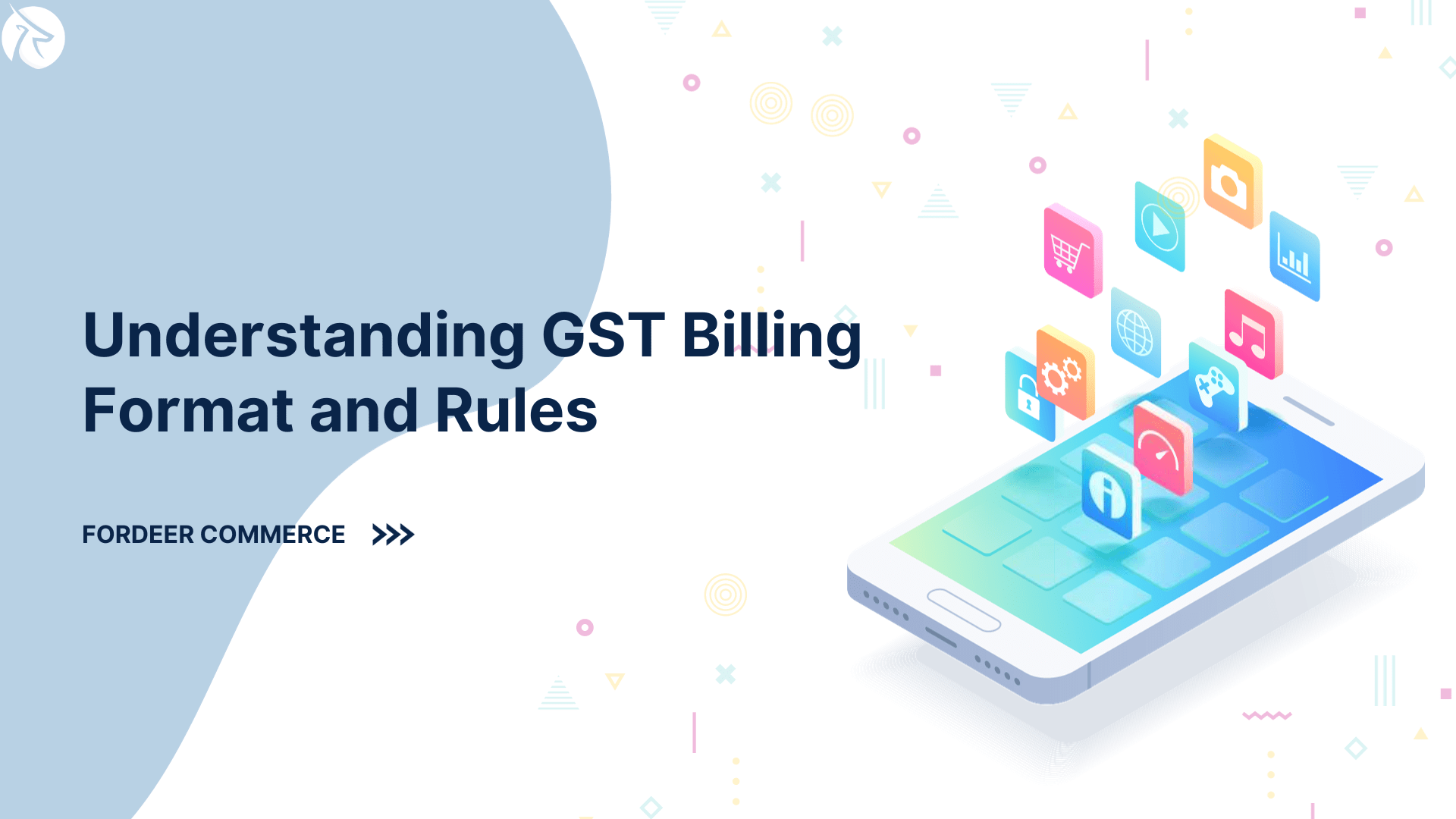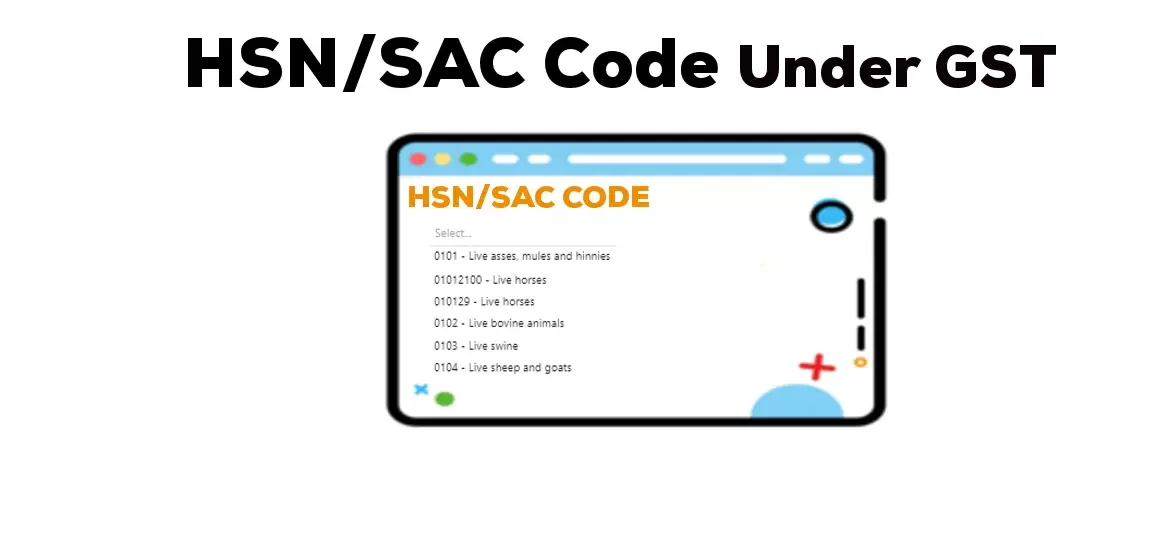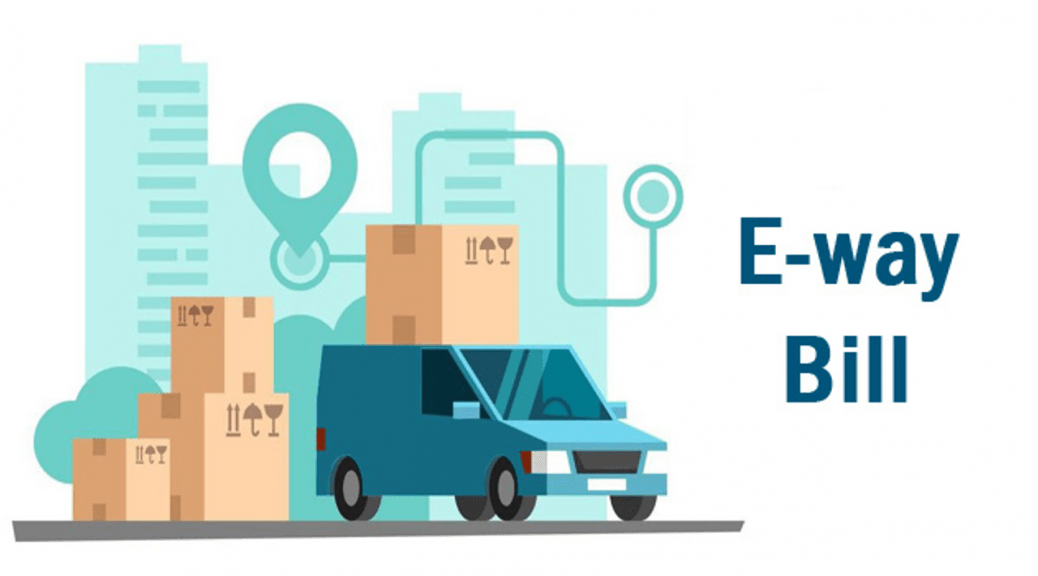The Essential Understanding GST Billing Format and Rules

In the dynamic landscape of business, staying abreast of regulatory requirements is crucial for success. One such imperative for businesses in India is the Goods and Services Tax (GST).
Effective GST billing is not only a statutory obligation but also a strategic necessity. In this blog post, Fordeer would like to dive into the intricacies of GST billing format and rules, offering a comprehensive guide to help businesses navigate this critical aspect seamlessly.
Understanding GST Billing
Definition
The GST invoice serves as a pivotal document, providing essential evidence of delivery and playing a crucial role in facilitating the utilization of input tax credits. Not only does it document the availability of goods or services, but it also serves as a necessary record enabling purchasers to leverage Input Tax Credit (ITC).

A licensed individual is unable to utilize an input tax credit without possession of a tax invoice or a debit note. The GST becomes payable at the time of sale, making the invoice a significant indicator of the supply period.
In simpler terms, the delivery of goods or services is considered to occur on the date of issuing the invoice or the receipt of payment, depending on which event transpires first. However, a special taxation method has been outlined for registered individuals (excluding composition dealers) engaged in the supply of products.
Importance of GST billing
Goods and Services Tax (GST) billing is not just a statutory requirement; it is a fundamental aspect that significantly influences the financial health and operational efficiency of businesses. Here are key reasons highlighting the importance of GST billing:
Legal compliance
Ensuring adherence to Goods and Services Tax (GST) regulations is a crucial obligation for businesses operating. The significance of proper GST billing extends beyond a mere procedural requirement; it serves as the bedrock for legal compliance, safeguarding businesses from potential legal ramifications and penalties.
In the dynamic landscape of commerce, the friendly yet formal act of embracing GST regulations becomes a cornerstone for sustainable and reputable business practices. By incorporating meticulous GST billing procedures, a business not only aligns itself with the statutory framework but also cultivates an environment of trust and reliability.
In contrast, non-compliance with GST regulations carries substantial risks, going beyond mere financial implications. Businesses face the prospect of encountering legal challenges that may result in financial setbacks. The potential consequences of non-compliance underscore the importance of adopting a friendly yet formal approach to GST billing.
Furthermore, the fallout from non-compliance can extend to the realm of reputation management. In today's interconnected business world, the reputation of a company is a valuable asset. Any lapses in adherence to GST regulations can tarnish the reputation of a business, impacting customer trust and stakeholder confidence.
To navigate these complexities, businesses are encouraged to infuse a friendly yet formal ethos into their approach to GST billing. This involves not only meeting the basic legal requirements but also embracing a proactive stance towards compliance. This approach can act as a safeguard against potential legal pitfalls, fostering a positive business image.
Input tax credit (ITC)
Embracing the practice of GST billing stands as a vital cornerstone for businesses aiming to harness the benefits of Input Tax Credit (ITC) – a powerful mechanism in the taxation landscape. The significance of this process extends beyond mere compliance; it plays a pivotal role in shaping the financial efficiency and overall operational health of a business.

In the absence of meticulous GST billing, businesses find themselves unable to unlock the potential advantages offered by ITC. The repercussions extend to heightened operational costs, creating a ripple effect across various facets of the organization. You should properly structure invoices and comprehensive documentation which become an important factor for businesses seeking to navigate the intricate landscape of Goods and Services Tax.
The essence of ITC lies in its ability to offset taxes paid on inputs against the final tax liability. This not only serves as a shield against excessive tax burdens but also propels cost efficiency to the forefront of a business's financial strategy. By seamlessly integrating the tax credit mechanism into their operations, businesses not only comply with regulatory norms but also gain a competitive edge in optimizing their financial resources.
Transparent transactions
The significance of clear and precise GST billing cannot be overstated. Beyond being a statutory requirement, it serves as a linchpin for fostering transparency in every transaction.
By offering a meticulous breakdown of applicable taxes, GST billing cultivates an environment where both businesses and customers can easily comprehend the intricate financial facets of a transaction. In this context, the transparency facilitated by accurate GST billing extends beyond mere compliance; it becomes a cornerstone for building trust and credibility.
When businesses provide a comprehensive account of the taxes involved in a transaction, it not only meets legal obligations but also resonates positively with customers. Clear and understandable transactions not only elevate customer confidence but also establish the business as one that values transparency and ethical financial practices.
In the customer-centric landscape of today, where trust is paramount, businesses leveraging clear and accurate GST billing find themselves at a distinct advantage. The transparency inherent in such billing practices goes beyond the numerical aspects, creating an atmosphere of openness and honesty in business dealings.
Avoidance of double taxation
An inherent advantage of GST lies in its ability to eliminate the cascading effect of taxes, a phenomenon where taxes are levied on taxes throughout the production and distribution chain. This is achieved through the provision of claiming credit for taxes paid on inputs.

Without the mechanism provided by GST, these taxes would accumulate, resulting in a snowball effect known as double taxation. However, with the implementation of GST, businesses can offset the taxes paid on inputs against their final tax liability. This pivotal concept ensures that taxes are applied solely to the value addition at each stage of the supply chain, effectively putting an end to the cascading tax burden.
Facilitates business operations
In the bustling world of commerce, where time is of the essence, a well-organized GST billing system becomes a valuable asset. Imagine it as a trusted companion, simplifying the intricate dance of financial transactions. By offering a clear and concise breakdown of taxes and transaction details, it not only enhances transparency but also fosters an environment of trust between businesses and their clientele.
Beyond the realms of compliance, the impact of efficient GST billing ripples through various facets of business functionality. This structured approach becomes the cornerstone for meticulous financial planning, empowering businesses to map out their fiscal journeys with confidence. From budgeting to forecasting, the insights derived from streamlined invoicing contribute to informed decision-making, steering the ship of business toward success with precision and foresight.
Easier audit and compliance verification
Ensuring that GST invoices are meticulously maintained not only aligns with regulatory requirements but also brings forth a myriad of advantages, particularly when it comes to the audit process. In the unfortunate event of a tax audit, the possession of precise and comprehensive records significantly facilitates authorities in their endeavor to verify compliance.
This proactive approach not only diminishes the likelihood of legal complications but also serves to expedite and simplify the overall audit proceedings. Consequently, businesses stand to save both valuable time and resources, allowing for a more efficient allocation of efforts toward their core operations.
Competitive advantage
GST billing transforms into a powerful tool for gaining a competitive edge in the marketplace. Customers, in particular, feel reassured when dealing with companies that prioritize accurate and lawful financial practices. This assurance can significantly enhance customer trust and loyalty, fostering long-term, mutually beneficial relationships.
Moreover, the competitive advantage derived from GST adherence extends beyond customer relations. Potential partners, investors, and collaborators also seek to associate with businesses that exhibit a strong sense of responsibility and integrity. As a result, companies that prioritize GST compliance often find themselves in favorable positions when exploring new business opportunities or forming strategic alliances.
Contribution to national development
In fostering precise GST billing and timely tax payments, businesses play a pivotal role in bolstering the nation's tax revenue. This collective contribution serves as the lifeblood for financing critical public services and infrastructure development, thereby becoming an indispensable catalyst for national progress.

By conscientiously adhering to accurate GST billing practices, businesses exhibit a commitment not only to their financial health but also to the broader well-being of the community. The revenue generated through diligent tax payment becomes the cornerstone for funding education, healthcare, public safety, and various other essential services that directly impact the lives of citizens.
Understanding GST Billing Format
Mandatory components
The creation of a GST invoice becomes an essential endeavor for businesses. An amicable yet formal approach to this process involves the inclusion of key components that contribute to the invoice's comprehensive nature. These pivotal elements embrace details about both the supplier and the recipient, ensuring a transparent and well-documented transaction.
On the supplier's side, providing accurate information such as their name, address, and Goods and Services Tax Identification Number (GSTIN) is imperative. This not only establishes the legitimacy of the transaction but also facilitates seamless communication between parties. Equally crucial is the inclusion of the recipient's details, encompassing their name and address. This dual-faceted approach ensures that the invoice serves as a clear record of the business transaction for both parties involved.
The uniqueness of the GST invoice is further underscored by the assignment of a distinctive invoice number, coupled with the precise date of issue. These particulars not only lend a sense of order to the invoicing process but also serve as critical references for both business and regulatory purposes.
Invoice types
Within the realm of Goods and Services Tax (GST), a diverse array of invoices is prescribed to cater to different transactional scenarios. These encompass tax invoices, bills of supply, and debit/credit notes.

Each of these invoice types serves distinct purposes, and businesses must familiarize themselves with the nuances of their respective formats. The variations in format ensure that the specific requirements of each type are met, promoting accuracy and compliance in financial documentation.
Therefore, businesses are encouraged to cultivate a comprehensive understanding of the distinctive features and applications of tax invoices, bills of supply, and debit and credit notes. This knowledge not only facilitates seamless financial transactions but also reinforces a commitment to adherence to GST regulations in a manner that is both approachable and professional.
HSN and SAC codes
It's important to note that the utilization of Harmonized System of Nomenclature (HSN) codes for goods and the Services Accounting Code (SAC) for services is not just a choice; it's a requirement. These codes play a crucial role in bringing order to the classification of goods and services, serving as a fundamental aid in the precise calculation of taxes.

The adoption of HSN codes ensures a systematic and standardized approach to categorizing various goods, while SAC codes perform a similar function for services. This systematic classification is more than just a procedural formality; it is a practical mechanism that facilitates accurate tax assessment.
Place of supply
Accurate identification of the place of supply is of paramount importance, as it plays a pivotal role in determining the applicable tax rate. This critical aspect ensures that businesses adhere to the prescribed taxation norms seamlessly.
The GST invoice, serving as a comprehensive document, holds the responsibility of explicitly specifying whether the transaction is intra-state (within the same state) or inter-state (spanning across different states). This distinction is not only a regulatory requirement but also a key factor influencing the tax implications on the transaction.
By incorporating this information into the invoice, businesses not only fulfill their legal obligations but also contribute to the clarity and transparency of the overall taxation process. In essence, understanding and correctly reflecting the place of supply in the GST invoice not only aligns with formal compliance but also contributes to a more amicable and efficient business environment.
Understanding GST Billing Rules
Time of supply
Gaining a grasp of the time of supply is of utmost importance in the realm of Goods and Services Tax (GST), as it forms the cornerstone for determining when GST payments come into play. In this context, the time of supply is demarcated by either the issuance of the invoice or the receipt of payment, with the earlier event taking precedence.
This implies that businesses need to be cognizant of these temporal intricacies to ensure accurate and timely compliance with GST regulations. By understanding and adhering to the specified time of supply, businesses not only fulfill their legal obligations but also streamline their financial processes, contributing to a smoother and more transparent business environment.
Reverse charge mechanism
In specific instances, the responsibility for GST payment falls upon the recipient rather than the supplier, and this mechanism is termed the Reverse Charge Mechanism (RCM). It's crucial for businesses to be cognizant of situations where RCM is applicable, as adherence to these circumstances is essential.
In these scenarios, businesses should exercise diligence in ensuring compliance with the Reverse Charge Mechanism, recognizing the significance of timely and accurate tax payments. Being well-versed in the application of RCM not only demonstrates a commitment to regulatory compliance but also contributes to the seamless functioning of financial processes within a friendly yet formal business environment.
It is advisable for businesses to stay informed and seek professional guidance to navigate the difference of the Reverse Charge Mechanism successfully. This proactive approach not only fosters a congenial business atmosphere but also instills confidence in stakeholders regarding the organization's commitment to ethical and responsible business practices.
Input tax credit
In fostering a tax-friendly environment, businesses have the opportunity to alleviate the burden of cascading taxes by leveraging the Input Tax Credit (ITC) on GST paid for both inputs and input services. While this presents a beneficial avenue for cost management, it's crucial to note that certain conditions must be met to successfully claim ITC.
Adhering to these stipulations is not just advisable but imperative for businesses seeking to optimize their financial strategies. By ensuring compliance with the specified rules governing ITC claims, your businesses can navigate the intricate terrain of tax regulations with confidence, enhancing their fiscal prudence and contributing to a more efficient and sustainable operational framework.
E-way bill requirement
In order to facilitate the smooth movement of goods surpassing designated thresholds, it is imperative for businesses to generate an E-way bill. This mandatory process is designed to ensure compliance with regulations and streamline the logistics of transporting goods.

It is essential for businesses to familiarize themselves with the E-way bill rules, taking proactive steps to generate the necessary documentation when required. By doing so, enterprises not only uphold legal obligations but also contribute to the efficiency and transparency of the supply chain.
Conclusion,
In conclusion, mastering the GST billing format and rules is indispensable for businesses aiming for compliance and efficiency. With a thorough understanding of the billing requirements and rules, businesses can not only fulfill their legal obligations but also leverage GST for strategic advantages.
Staying informed and adapting to the evolving GST landscape is the key to unlocking the full potential of this transformative taxation system. For more useful information, stay tuned with Fordeer Team!











